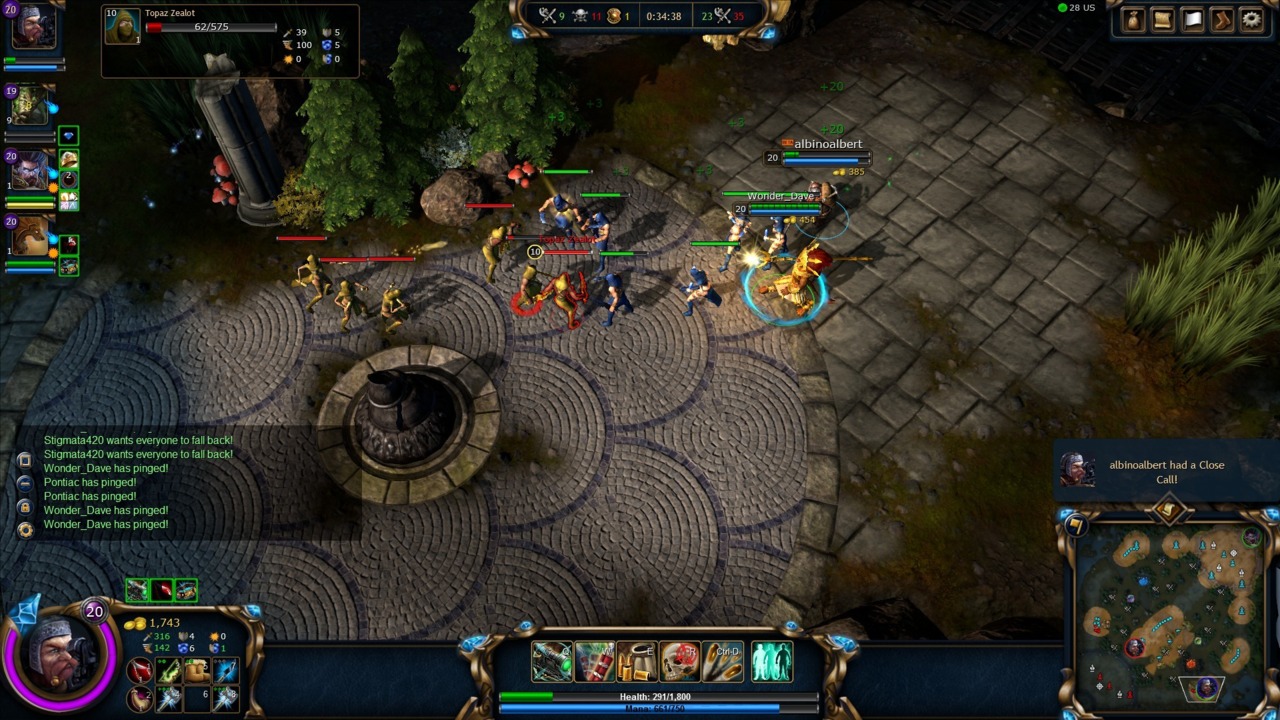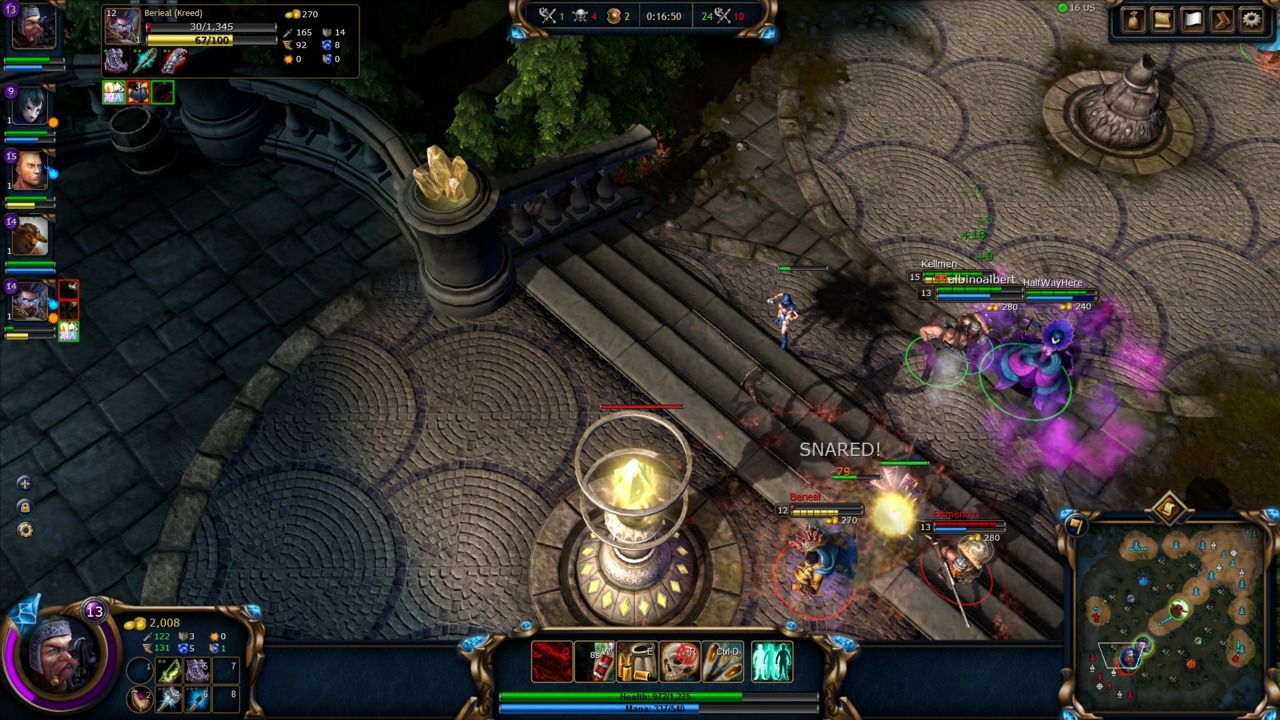You might haphazardly throw phrases like "quick learner" or "strong attention to detail" on your resume, but if those qualities don't actually describe you, good luck getting anywhere with Rise of Immortals: Battle for Graxia. Every match is a lesson in action, reaction, and, if things are going poorly, crisis management. The game is built on the framework of Defense of the Ancients, a popular Warcraft III mod that pits multiple players against each other--hence the term multiplayer online battle arena or MOBA. Battle for Graxia is simple to learn and tough to master, and because every match unfolds differently, you're always adapting and picking up new strategies.

Excluding a few innovative and welcome features, this is a factory-standard MOBA. Battle for Graxia will instantly feel familiar to those who play League of Legends or the aforementioned DOTA, though it can't yet stand toe-to-toe with those giants of the genre. The pool of a few dozen immortals is woefully small in comparison, though to its credit it manages to stuff a ton of tactical and aesthetic variety into such a short roster. There's Kaos, a stealthy soldier who can be skinned to look like a certain blond, crude first-person shooter action star. Trovoc is a dragon that excels in area denial. Ichorr is a lumbering tree with access to useful support skills that heal allies or snare enemies. This variety serves a great purpose: if you want to be a valuable teammate, one character is sure to have a skill set that will let you contribute. Also, it's hilarious to see a dude with an assault rifle fighting alongside a dragon.
The game makes its characters' strengths and weaknesses visible so you always know what you're getting into. For example, the dwarven sniper Balak is a ranged, single-target damage dealer with high offense and low defense, and he's moderately difficult to play. This information can be consumed in a glance, which is helpful for combating role confusion, especially for new players. Like in many other free-to-play MOBAs, fewer than half of Battle for Graxia's immortals are available for play at a given time. They can be purchased permanently from the in-game store, which is recommended if you find yourself really clicking with a certain character.
The short tutorial explains the basics of movement, attacking, and a few other mechanics, but it doesn't thoroughly address team composition, path management, or any of the deeper MOBA essentials. You can arrange player-versus-environment matches, which are useful for new players and for testing out immortals. However, it quickly becomes clear that AI opponents rarely attack you in the same way a living, breathing foe would. If you're interested in getting better, it's smarter to just participate in player-versus-player games with up to four teammates and review matches with the built-in replay system. It's easy to use, and because you can see what players were doing at all times, it's an invaluable learning tool.

Battle for Graxia's gameplay closely mirrors the systems of its predecessors. That is to say, it's very good, if unoriginal. You're still inching down pathways, or "lanes" in MOBA-speak. You're still taking out the enemies' turrets and eventually their main base. Creeps, both friendly and hostile, still stream ahead and clash, gaining and losing ground as forces ebb and flow. Matches are tense encounters that require you to think about item choice, geographic positioning, micro-movements, and skill management. Communication is key, and you always have to consider your next move. Handling all of this at once is challenging, and hectic.
Every character has a standard lineup of combat skills, but each also has a one-time-use signature skill that can turn the tide of battle. It should be used only in dire situations when a conventional victory doesn't look feasible. One of the coolest is an ionic plasma strike that scorches everything in a huge radius. Another buffs the entire team with invisibility and grants the caster more striking power. The inclusion of these super abilities sets Battle for Graxia apart and adds a constant layer of tension to each encounter. After all, even your strongest, most well-coordinated assault could be stalled at the press of a button. Or, knowing your enemy just wasted a signature move, you might be emboldened to attack in a way that you weren't attacking before.
As you spend time away from your base attacking enemies, you earn coins to spend on items that increase your stats. The store is crowded and complex to such a degree that searching through it during a match can be a serious detriment to your team. You can view the store outside of a live game and tag your favorite items for easy access, but this option is hidden deep within the real-money store at the main menu. It doesn't make sense to bury such an important element of the game within a shop that many players might never visit. Also, the static art style might throw off inexperienced players at first. Why should you buy a bow to increase the stats of your sniper rifle? Why does your character still swing an axe even though you just purchased a hammer? To their credit, item upgrades have been simplified. Unlike in DOTA, where items can be combined, Battle for Graxia's weapons and armor scale linearly. It's a small design choice that keeps you out of menus and in the action.

Most impressively, Battle for Graxia includes a new mode that alleviates one of the MOBA genre's biggest problems: quitters. Whether because of a poor connection or just a good old-fashioned rage quit, a team that loses a member is instantly at a severe disadvantage. Battle for Graxia's white knight system draws kind, queued players into a game to replace missing immortals. Leaving doesn't seem to be a huge issue in the community so far, but when it happens, a white knight is quickly and reliably sent in. Most of the time, you probably won't notice that someone left in the first place.
Despite a few oddities like single-use skills and linear item progression, Rise of Immortals: Battle for Graxia doesn't steer battle arenas in an innovative new direction. Instead, it feels like developer Petroglyph took its hands off the wheel and nobly focused on the leaks in the MOBA boat. Players are upset about other players leaving? Let a new player join. People want access to a fast, simple replay system so they can study matches? Let's include one. It may not be the most varied game of its type, but it's very good, and it's bent on leaving the genre in better condition than it was found in.